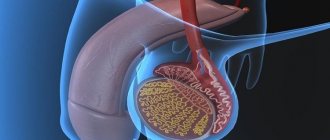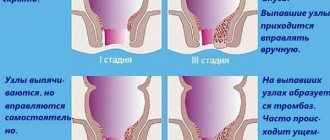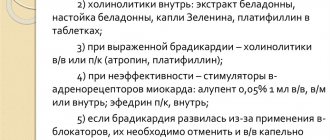What properties does hypertonic salt solution have?
Hypertonic saline solution is a liquid that has a sodium chloride concentration of more than 0.9% and is an official medicine. The solution can be prepared at home.
If all recommendations are followed, it retains the same properties as the finished pharmaceutical drug:
- Ability to heal wounds.
- Antimicrobial protection - removal of viruses and bacteria from the body, as well as inhibition of their development.
- Improvement of the digestive tract.
- Removing swelling of tissues and affected areas.
- Elimination of the inflammatory process.
The action of the solution is based on simple physical processes occurring in the body. It is known that each cell of the body contains liquid, the concentration of which is 0.9%. If it is violated, a destructive process may begin that has irreversible consequences.
When a hypertonic solution enters the body, due to its higher concentration of sodium chloride, it draws liquid with dangerous substances (toxins, viruses, bacteria, etc.) from diseased cells, which provoke the development of inflammatory and other processes.
Nasal rinsing in children
It is unlikely that children under three years old will be able to explain the technique of the procedure. To clean your baby's nose, you need to place his head on your lap with his nose facing up. Using a pipette, take a few drops of the solution and inject it into each nostril in turn. After 20 - 30 seconds, use a special aspirator to remove the mucus with the remaining washing liquid. The baby should not be left alone during the procedure - you need to make sure that the baby does not choke.
For older children, the procedure can be performed in a sitting, lying or standing position, focusing on the child’s wishes. If during the procedure, the baby complains of tingling in the nose, then the salt concentration is slightly higher than optimal (the mucous membranes of children are more sensitive and receptive). In this case, you need to dilute a new solution with less salt or dilute the existing one with water.
Indications for use
Saline solution is prescribed for use in the following cases:
- ARVI.
- Purulent wounds and burns.
- Insect bites.
- Frostbite.
- Inflammatory processes of the oral and nasal cavities, as well as internal organs.
- Profuse internal and external bleeding.
- Gynecological diseases.
- Severe headaches (including migraines).
- Constipation.
- Severe dehydration.
- Thyroid gland dysfunction.
- Joint diseases.
- Kidney failure and problems with urine excretion.
- Conditions in which a deficiency of chlorine and sodium ions occurs (poisoning, swelling of brain cells, etc.).
- Diseases of the respiratory system.
Saline solution is also used in cosmetology. It shows high effectiveness for problems with hair loss and skin rashes.
Before using the product, regardless of the purpose, it is recommended to consult your doctor or cosmetologist to avoid negative effects on health.
Contraindications
With a wide range of effects, saline solution in some cases can cause harm to the body.
Its use should be avoided if:
- Having an allergy to the substance.
- Certain types of internal bleeding (for example, pulmonary).
- Sclerosis of cerebral vessels.
- Presence of stones in the kidneys and gall bladder.
- Volvulus.
- Open ulcer of the digestive tract.
- The presence of scars and adhesions.
- Hernia.
- Heart diseases (ischemia, defect).
The saline solution is used with extreme caution in cases of high blood pressure, renal failure, and in cases of water and electrolyte imbalance in the body. When using a pharmaceutical solution, you must familiarize yourself with the possible contraindications that are indicated in the instructions.
Preparation of a classic solution
Hypertonic salt solution (it can be prepared at home with only 2 components) is prepared simply and does not require a lot of time and money.
But to obtain effectiveness, it is necessary to follow all recommendations for the selection and preparation of components and the immediate preparation procedure.
It is worth noting that the self-prepared solution is used only externally. For intravenous administration, special sterile solutions are used, sold in pharmacies.
Preparing the Components
To prepare the solution, it is recommended to use distilled water, since it does not contain any impurities. If there is no such liquid, it can be replaced with boiled water - it will contain a minimal amount of dissolved salts.
It is recommended to pre-cool the water to 35 0C. Salt must be used regular or sea salt without additives in the form of iodine and other trace elements.
Step-by-step cooking process
Preparation of a saline solution includes the following steps:
- 90 g of salt must be added to prepared water (1 l).
Hypertonic salt solution - to prepare you need to add 90 g of salt to 1 liter of water. - The resulting mixture must be stirred vigorously until the salt is completely dissolved. If it does not dissolve, the solution can be warmed up a little.
- The prepared solution must be poured into a clean container and used for its intended purpose.
You can store the prepared product for no more than a day in an airtight glass container. In some sources, there is an option for preparing a solution in which salt is added to the water immediately after boiling.
You can also use this method - the temperature of the water in which the salt is dissolved does not matter. The main thing is to use the solution only after the liquid has cooled. The optimal temperature will be no higher than 36 0C.
How to rinse your nose correctly?
Many people are hesitant to try the procedure on themselves, mistakenly believing that this manipulation is very complicated. At first, it may not be entirely comfortable, but after several sessions, you will get used to it and will cope with it with ease.
There are several ways to rinse the nasal cavity. Let's look at the most common ones:
- The easiest way is using an ordinary pipette: you need to take a few drops of the solution into the pipette and drop it into each nasal passage one by one, tilting your head back. Hold your head like this for a few seconds, then blow out the contents of your nose. This manipulation must be repeated several times. You will immediately feel how much easier it is to breathe.
- Another method involves using a small kettle as a rinsing device. Pour the solution into the kettle and tilt your head to the side, place the spout of the kettle in your nostril and carefully pour the liquid into it. According to the principle of communicating vessels, liquid will flow out of the second nostril. Then repeat the same procedure, but on the other side. During the procedure you need to breathe through your mouth. If you don’t have a suitable kettle at hand, you can use a syringe or syringe without a needle.
- Another well-known method is to pour the washing liquid into a saucer and draw it in with your nose, but do not swallow. Spit out the liquid and repeat the procedure.
Preparation of the solution, proportions of ingredients depending on its purpose
A hypertonic salt solution, which can be prepared at home in different concentrations, is used in the form of compresses, inhalations and rinses. Based on the purpose of use, the appropriate concentration of the solution is selected.
For gargling
Thanks to its pronounced antimicrobial and antiseptic properties, the saline solution helps relieve inflammation, swelling and pain in various diseases of the mucous membrane of the throat (including sore throats). To do this, you need to use a solution with a concentration of 1-2%.
To prepare such a product, you need to dissolve 0.5 tsp in 200 ml of water. salt. This solution can be used to irrigate the throat. For mild forms of the disease, rinsing should be done 2 times. per day, and for more severe cases - about 4-5 rubles. per day.
For gastric lavage
To lavage the stomach, it is necessary to prepare a large volume of solution - at least 1 liter. To do this, 40 g of salt should be dissolved in the specified amount of water. It is recommended to heat the water during this process. Before use, the prepared solution should be cooled to 35 0C.
Rinsing with the product is one of the most effective and safest methods for silver nitrate poisoning. It is also used for intoxications of various origins (including food poisoning).
For this solution you need:
- Drink in small sips to avoid spasms.
- Induce vomiting.
The saline solution binds and removes toxins from the body. In case of silver nitrate poisoning, the most effective way to use the product is to rinse through a special probe.
For enema
To administer an enema, a saline solution with a concentration of 5% is used. To prepare it, you need to dissolve 10 g of salt in 200 ml of water. The product should only be used when it has cooled down to human body temperature, so as not to cause intestinal irritation.
The solution softens stool and stimulates bowel movements. The effect after the enema occurs within 10-15 minutes.
For external use, applying bandages for purulent inflammations
For purulent wounds, a solution with a concentration of 10% is used. It will take longer to prepare because salt does not dissolve well in a small amount of water.
The product is prepared as follows:
- Pour 10 g of salt into a suitable container.
- Salt must be poured with boiled water (about 90 ml of water will be required). The total volume of the solution should be 100 ml.
- The resulting solution should be placed on low heat and brought to a boil.
- After this, the solution must be boiled for 10 minutes, stirring regularly.
- The prepared product must be cooled to 25 0C before use.
For purulent wounds and other skin lesions, special dressings are used. To do this, clean gauze needs to be folded into 8 layers. You can also use a clean cotton or linen fabric, which is folded into 4 layers. Before applying the bandage, the affected area of skin should be washed carefully with soap and warm water.
After this, the cloth soaked in saline solution is carefully applied to the wound and secured with bandages or adhesive tape. It is forbidden to put polyethylene on top of the bandage as with a compress - it will not allow air to pass through.
It is the “breathable” bandage that ensures that pus is drawn out from the wound and toxins are released. It is important to keep the bandage damp at all times.
Therefore, it must be periodically moistened in a warm saline solution and applied again to the wound.
Classification of postoperative sutures
How quickly the sutures heal after surgery largely depends on the nature of their application and the materials used. In this regard, post-surgical procedures are usually classified as follows.
- Bloodless (the edges of the wound are glued together with a special plaster) and bloody (a classic suture that is applied manually with a medical instrument). In turn, the latter are divided into:
- simple knots (applied at a distance of 1–2 cm from each other, after which the knot is tightened until the edges of the incision touch);
- intradermal continuous (considered the most effective, since after their healing there are no traces left);
- mattress (applied after abdominal surgery);
- purse string (used in plastic surgery, as well as in operations to reduce the volume of the stomach);
- entwining (circular sutures that are used to sew together blood vessels and hollow organs).
- Manual (applied with a needle, thread and other special tools) and mechanical (performed with a medical stapler).
- Submersible (applied during operations on internal organs with threads that are absorbable or implanted into living tissue) and removable (they are used to stitch the skin, and after the edges of the wound have fused, the threads are removed).
Absorbable sutures are made in cases where long-term fixation of the edges of the incision is required, for example, when cutting the uterus during a cesarean section. As a rule, they are performed with threads from purified connective tissue, which is subsequently rejected into the organ cavity. To apply removable sutures, threads and other fasteners made of cotton, silk, metal and other non-absorbable materials are used (more than 30 varieties in total).
Hand stitching tools
Application of the solution
Hypertonic salt solution (it can be prepared at home within 5 minutes) has a wide range of effects on various diseases and health problems. When using, you must follow these recommendations and take into account the physiological characteristics of the person.
For joint diseases
For inflammation and pain in the joints, bandages, compresses and dressings with saline solution are used. They help reduce pain and reduce inflammation.
To do this, a bandage made of gauze or clean cloth should be moistened in a saline solution (1-2%) and placed in the area where pain is felt. It must be fixed and left to act overnight. Treatment in this way is recommended for no more than 2 weeks.
For burns
For burns, a 1% salt solution is used. It is necessary to moisten a cotton swab or a clean cloth in it and carefully apply it to the affected area in the form of a bandage.
For greater effectiveness, they should be 2 rubles. change per day. The solution reduces combat syndrome and the area of burned skin. Regular use of salt dressings can speed up the healing process.
For sinusitis
The solution is used for washing.
Regular use provides:
- Improving the outflow of pus and mucus from the nasal passage.
- Moisturizing the mucous membrane and enhancing its protective properties.
- Disinfection of damaged tissues.
- Strengthening the therapeutic effect of drugs used for sinusitis.
To obtain a good result, it is important to perform rinsing correctly. To do this, you can use a special device or limit yourself to a syringe without a needle or a syringe.
Further:
- Before the procedure, you should clear your nasal passages of mucus.
- Apply vasoconstrictor drops to your nose.
- The solution should be used warm, but not hot. It must be inserted into one of the nasal passages using a syringe/syringe. The liquid should come back out through the mouth.
- A similar action should be carried out with the other nostril.
During the procedure, you need to make sure that liquid does not get into the ear tubes - this can provoke the development of otitis media. It is recommended to rinse in the evening before going to bed. Noticeable improvements, according to reviews, can be noticed after continuously performing the procedure for 5 days.
For asthma
In most cases, the cause of bronchial asthma is the body's reaction to allergens of various etiologies. As a result, a person suffers from prolonged suffocation, accompanied by coughing attacks. The most common cause of an allergic reaction is a lack of chlorides.
Therefore, for asthma, it is recommended to inhale a strong saline solution with a concentration of 10%. This will help speed up the process of phlegm leaving the lungs and weaken the attack.
Inhalations can be carried out using steam over a container with a warm solution, or a nebulizer can be used for these purposes (it can be used when treating infants). After the procedures, the person should be in a calm state for 20-30 minutes.
It is forbidden to go outside or be exposed to drafts. Salt dressings also show good results. To do this, a suitable cloth or gauze, folded in several layers, is generously moistened in saline solution and applied to the chest area.
The interaction time is about 12 hours. To alleviate the condition during asthma attacks, a person should be freed from tight clothing and a flow of fresh air into the room should be ensured.
For depression
For depression, it is recommended to wash your face with saline solution every morning and wipe your body. To prepare it, you need to dissolve 10 g in 1 liter of water. Among traditional healers, soaking your feet in a salt solution is popular for depression, loss of strength and general weakness of the body.
The procedure consists of several stages:
- In a suitable container (you can take a bowl or bucket) you should dissolve 2 tbsp. l. salt.
- Pre-washed feet should be immersed in the prepared saline solution and left for 10-15 minutes.
- After the procedure, your feet should be rinsed with warm water and dried with a soft towel.
For edema
To relieve swelling, use a 10% salt solution. The table below presents options for using the product for various types of edema.
| Type of edema | How to use the solution |
| Swelling due to bruise | It is necessary to apply a salt dressing to the site of the bruise and leave it for at least 10 hours. It helps not only eliminate swelling, but also reduce pain and prevent the formation of a hematoma. |
| Swelling of the feet | Cotton socks should be soaked in a saline solution and put on clean feet 2 hours before bedtime, leaving them to act overnight. The product is highly effective - after 2-3 procedures the swelling completely disappears. |
| Swelling of the calf muscles | Apply a saline bandage to the swelling site or use a clean cotton sock. The front part should be cut off, soaked in a salt solution and pulled over the calf area. For interaction, the bandage must be applied overnight. |
In case of poisoning
Often, poisoning of various origins is accompanied by diarrhea and vomiting, during which the human body loses fluid and minerals. A saline solution helps reduce and prevent this phenomenon.
If used in a timely manner, the product will help neutralize the toxin, preventing its subsequent entry into the bloodstream and absorption by internal organs.
This solution is prepared as follows:
- It is necessary to boil water (3 l) and cool it to 25 0C.
- Add 3 tbsp to the water. l. salt and sugar, as well as 1.5 tbsp. l. soda The solution must be stirred well until the minerals are completely dissolved.
The ratio of components when treating a child changes - add 1 tsp to 1 liter of water. salt. In the initial stages of poisoning, it is recommended to drink 200 ml of solution after each attack of vomiting or diarrhea.
For insect bites
In case of an insect bite, lotions are made from saline solution. To obtain maximum effect, they should be done within 1 hour after the bite.
To do this, moisten a clean cloth in a salt solution (2%) and apply it to the bite site for 5 minutes. If a bee has bitten you, before the procedure you need to check whether there is a sting left.
What can you eat in the first days
You can eat a few hours after the last episode of vomiting or loose stools. There are no strict recommendations: most likely, you yourself will feel when you want to eat. It is better to start with light foods: rice, bread, saltine crackers or bananas.
“One of the most proven diets is BRAT (banana, rice, applesauce and toast) - includes bananas, rice, applesauce and bread. This set contains essential microelements, fiber and is quite easily digestible. When your stool normalizes, you can switch to your usual diet,” says Alexey Olegovich.
In the first days, you should refrain from foods that increase gastrointestinal motility: drinks containing caffeine or alcohol, dairy products, as well as spicy, fried or fatty foods.
When should you see a doctor?
- if poisoning is associated with the consumption of mushrooms, sea fish or canned food (possible sources of neurotoxic substances);
- when consciousness is depressed - if a person falls into delirium, he begins to hallucinate;
- with numbness in the limbs or cramps;
- if the temperature is above 38°C for more than a day;
- when streaks of blood appear in the stool or vomit;
- if the condition does not improve after 2–3 days;
- if you have a small child who cannot be given water.
As a rule, specific treatment for poisoning is not required. It is important to maintain bed rest, replenish lost fluid volumes and gradually return to your usual diet. If the measures taken do not bring relief and your health worsens, do not hesitate to call an ambulance.
Source: whealth.ru
Precautions when using hypertonic saline solution
A hypertonic salt solution, prepared at home and which is important to use correctly, has certain nuances of use.
Namely:
- They should not replace medications prescribed by the attending physician - the solution is used as part of complex therapy.
- Strictly follow the proportions - if the solution has a concentration higher than 10%, irritation of the mucous membranes and skin will occur (excessive dryness, burning sensation, tight skin, etc.)
- Do not use the solution for intramuscular and subcutaneous injections - this may cause tissue necrosis.
- When using a homemade solution, it should be used immediately after preparation.
- If there is sediment in the solution, it is not recommended to use it.
Hypertonic saline solution is used as an adjuvant in the treatment of a number of problems. You can buy it at a pharmacy or prepare it at home, following these recommendations.
Recipes and instructions
The prepared solution is stored in a tightly closed jar so that it does not change its concentration during evaporation.
What material to use
For the bandage, it is better to use gauze, or any natural fabric, washed many times, that is pleasant to the touch. If new fabric is purchased for these purposes, it must be washed several times before use. The presence of any contaminants on the fabric is not allowed. New waffle and starched fabrics should not be used.
The dressing should be breathable, so you will need more gauze than other thick fabric.
How to use saline dressings
To get a good effect, you need to know how to make a hypertensive bandage. The best time to apply a bandage is in the evening. A bandage made at night lasts a long time and does not interfere. In the morning you need to remove it and take a shower or wipe the application area with a damp towel.
It is recommended to carry out treatment for two weeks. With regular use, the healing process accelerates.










